Dyess MAC, daddy of them all as Military Affairs Committee marks 70 years
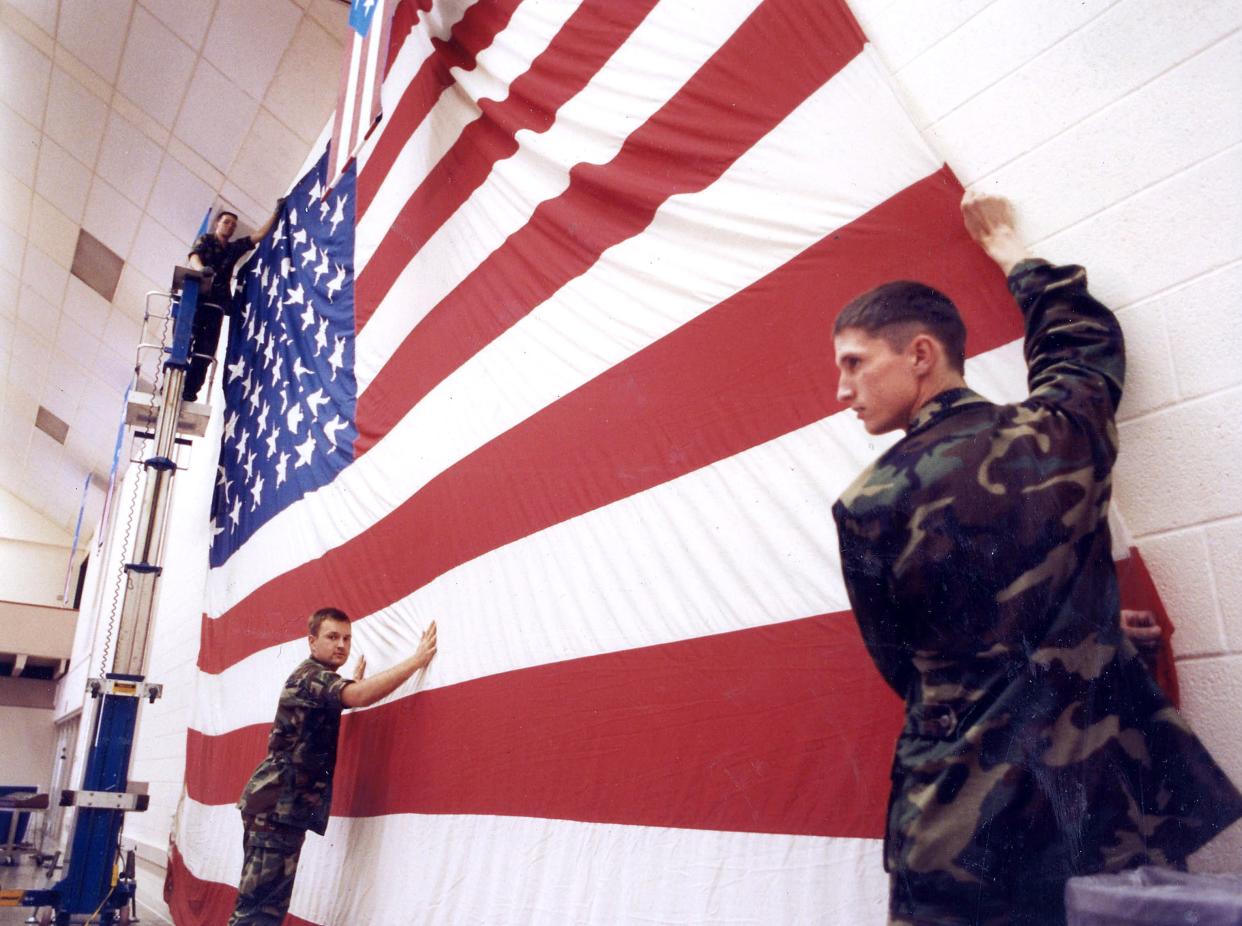
- Oops!Something went wrong.Please try again later.
Here's a bit of trivia for you.
Before there was the Big Mac, there was the MAC.
Ray Kroc opened the first McDonald's on April 15, 1955, in Des Plaines, Ill.
Two years earlier, a group of Abilenians worked together in what today is the Military Affairs Committee of the Abilene Chamber of Commerce. An effort already was underway to land an Air Force base here, locating it west of Abilene where Tye Army Air Field (later Abilene Army Airfield) had been used during World War II.
Money - about $1 million - was secured to buy 5,000 acres to give to the Air Force to sell it on investing in Abilene. Centrally located in the United States. Generally fine weather. A wide open area. And a supportive community.
Little did they know that one day, bombers at the West Texas base would depart on global missions in any direction.
Their efforts paid off.
Celebrating the Air Force in Abilene
On April 15, 1956 - one year after Kroc began making history with hamburgers - Abilene history began a new chapter when Abilene Air Force Base, part of the Strategic Air Command, opened. In December that same year, the base was named for Lt. Col. William E. Dyess, a Shackelford County boy and World War II Pacific Campaign hero, who died in a crash landing in 1943.
Last year, the Air Force celebrated its 75th anniversary.
This year, Abilene's big MAC celebrates 70 years. There was community leadership to connect the city with Camp Barkeley, an Army training base located southwest of the city, during World War II. And leaders stayed active after the war with hopes of security a new base when the Air Force was established in 1947.
The organization recognizes 1953 as its start, the "Military Affairs Committee" became its formal title.
"We have worked together ever since," said Gray Bridwell, a former MAC chairman and currently vice president for military affairs with the chamber. He has been a MAC member since 1998, becoming chairman in 2012.
"The core mission of the Military Affairs Committee is to keep Dyess another 100 years," Bridwell said. "That is the scope and the mission."
And to celebrate victories, such as bringing to the B-1B bomber to Dyess almost 40 years ago, surviving rounds of Base Realignment and Closure (BRAC) that closed hundreds of military installations between 1988-2005 and securing the B-21 bomber.
A gala is planned for Aug. 26 at the Abilene Convention Center to celebrate both the service branch and the MAC.
Guests will include Gen. Robin Rand, commander, Air Force Global Strike Command based at Barksdale AFB, La.
A highlight, Bridwell, said with be a ... pylon?
Originally, the B-1 was designed with six external "hard points" to load munitions. Due to Cold War agreements, these area were welded shut.
The MAC has pushed for removing the welding to install a new pylon that allows for the original mission to be conducted. With this modification, a B-1 can launch a hypersonic missile hundreds of miles from its target and accurately strike it. That provides both stealth and safety.
The pylon will be displayed along with a plastic model of the missile.
"It looks real," Bridwell said.
Real dangerous, too.
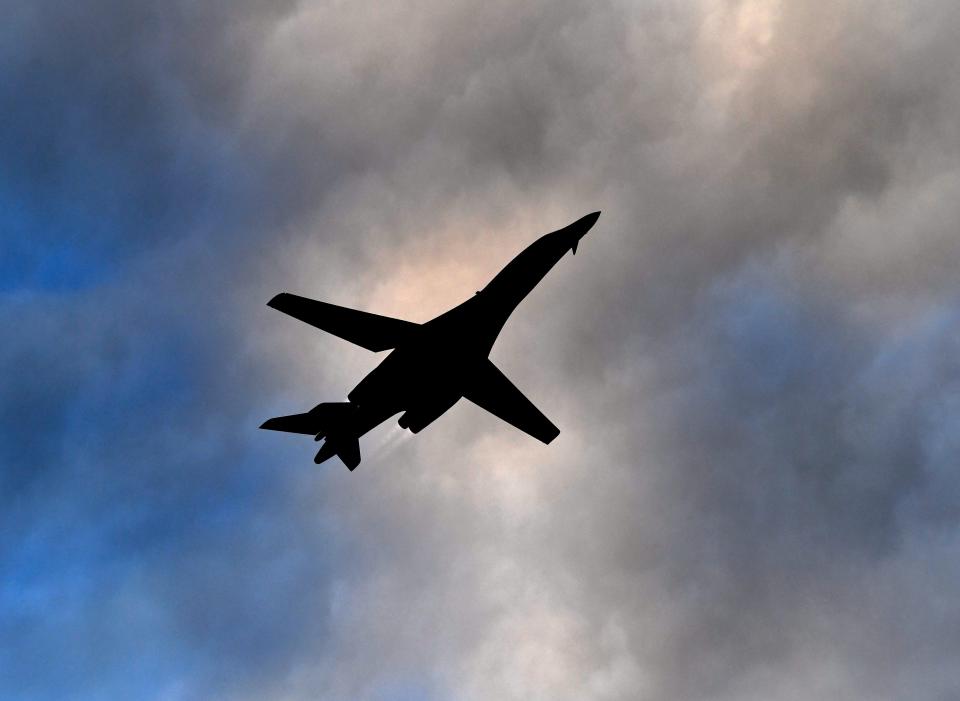
About the MAC
More than 300 people comprise the MAC. Chamber membership is required.
The other qualification are "people who are passionate for the Air Force and Dyess," current MAC chairman Greg Blair said.
There also are two dozen "honorary commanders," who team with Dyess leaders to help them navigate Abilene.
There have been eight MAC chairpersons. They are:
Oliver Howard
Fred Lee Hughes
David Weeks
Frank Puckett
Celia Davis
Dr. Jim Webster
Gray Bridwell
Greg Blair
Howard and Hughes also are former Abilene mayors.
The idea then remains the same - to connect the city and the air base. What can residents do to make airmen feel at home in West Texas, and what can the community do to ensure Dyess AFB stays put. It's a major economic driver for the city. Communities that have lost their military base have struggled to rebound.
"Everyone understands the economic impact," Blair said, "but it's so much more that. It's quality of life. You hear that often in the Air Force."
Col. Seth Spanier, who took over Dyess July 24 as the 7th Bomb Wing commander, agreed.
“The relationship between Dyess and Abilene is the epitome of a thriving partnership between a military installation and its host community," he said in a written statement. "That relationship has been made possible by the unwavering support of the MAC for the last 70 years.
"They’ve worked tirelessly to support our service members through their many challenges and demanding mission sets. I’m proud to play a part in continuing to nurture and grow this relationship as we lay the foundation for the next 70 years.”
MAC activities range from quarterly meetings, where Air Force updates are given, and welcoming high-ranking officials to Abilene - both military and in government - to the perhaps the most visible event - the yearly World's Largest Barbecue. That has been staged for almost 60 years, providing active duty and retired military personnel and their families a Texas-sized meal.
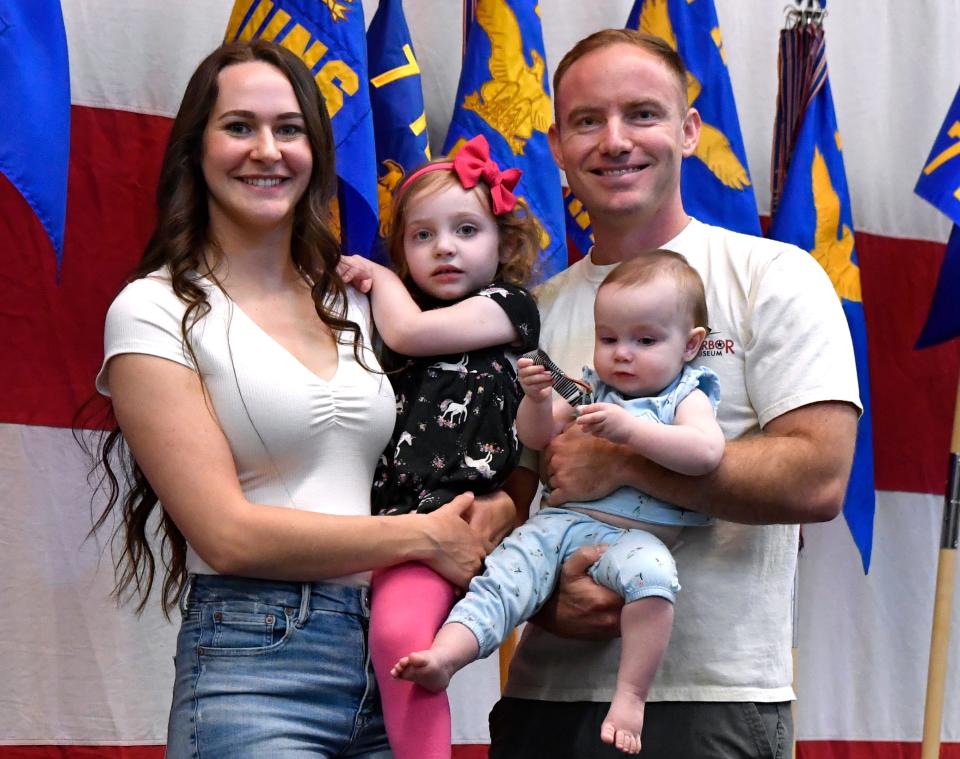
Recently, former Dyess commander Glen VanHerck spoke at a quarterly meeting. He now is commander of the North American Aerospace Defense Command and United States Northern Command.
"He only came because we're friends," Bridwell said. "He's the one who shot down the balloon. He's the one who makes sure our borders are not infiltrated."
(In February, an Air Force fighter shot down a suspected Chinese spy balloon)
Another is Gen. Mike Minihan, who was at Dyess from 2003-06. He now is Air Mobility Command commander, based in Illinois.
Stay connected
MAC leaders Bridwell and current MAC Blair said it's about being relationships that will last. Lifelong friendships have been built. Abilene has grown on those stationed at the base, many choosing to live in the city after retiring from active duty. Recent examples are Michael Bob Starr, who actually retired early to run for U.S. Congress to represent this area, and Brian Yates, who this year was elected to the Abilene City Council. He is former Air Force.
Larry Gill, longtime grants administrator for the Dodge Jones Foundation, served in the Air Force and retired with his family here. With his wife, Mary, they served the community in other ways and together were named the chamber's Outstanding Citizens of the Year in 2020.
It's these kinds of relationships the MAC wants to build. Yes, those relationships pay off by securing the Dyess mission in Abilene. But it's also social. Many Christmas cards are exchanged. Sometimes, vacations are taken together - Blair did just that recently with a former Dyess wing commander.
"It's what we always harp on - it's about mission, families and airmen," Blair said.
MAC leadership are frequent fliers to Washington, D.C., to speak to the right people at the Pentagon or on Capitol Hill.
"We're talking about mission. Back home, it's airmen and families," he said.
One example are the efforts of Alan and Judy Farmer, who head the Home Away From Home program that unites airmen and local residents.
"They do a phenomenal job," Blair said.
And those who work or shop downtown once a month may see airmen who arrive on blue buses and are given tours. This shows what Abilene has to offer when they are not working.
Bridwell said his friendships with those at Dyess led him to become a MAC volunteer 25 years ago.
"I love Dyess Air Force Base ... and flying and planes," he said, smiling.
Blair is closing in on 20 years with the MAC. In 2005, he was chairman of the chamber, thus an honorary commander for the current base commander.
"That was my initial exposure, though I had always admired the military," said Blair, who considering joining the Air Force after college. His MAC involvement has fulfilled, in part, the "what-if," he said.
He enjoyed those he met at the base and found they shared common values.
"There is so much admiration on my part and Gray's part for what they do," Blair said.
But it's work, and it takes hours to devote to trips and meetings and such to promote Dyess and/or to push for the future. That most recently has been bridging the gap between keeping working B-1s at Dyess while the B-21 Raider is developed and moves toward production and, eventually, assignment here and at Ellsworth AFB.
Webster, for example, was a fan of the C-130, the gray-prop hauler that also serves worldwide.
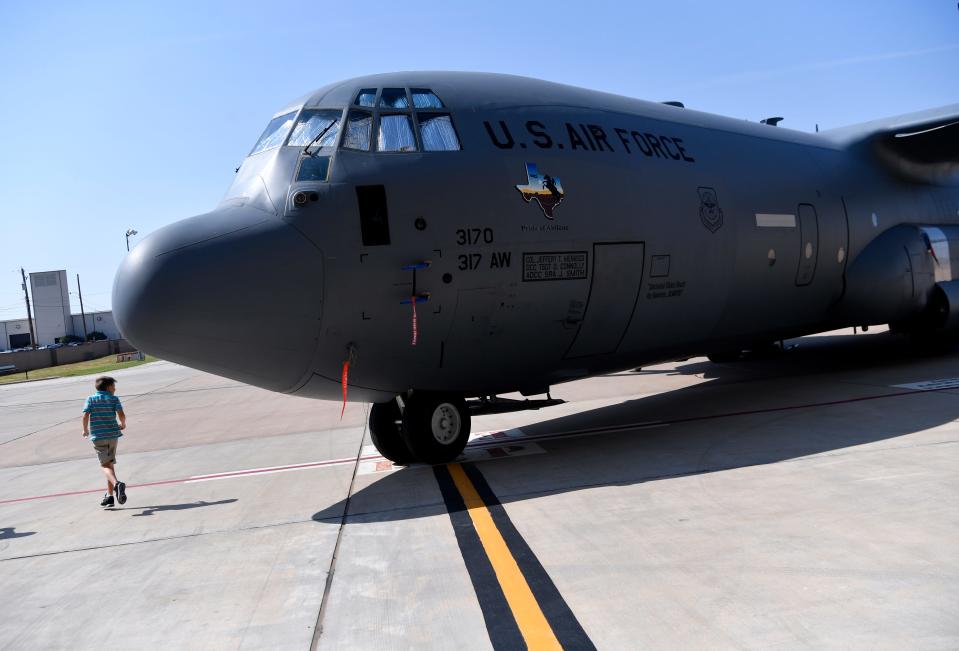
He once spoke honestly to Air Force leadership about the condition of the fleet of H-model aircraft at Dyess. We need better planes, he said.
As MAC chairman, his words carried weight.
Eventually, the Air Force began sending the new J-model to Dyess, replacing dozens of planes with today's aircraft.
Score that a victory for the MAC.
Seeing needs and meeting needs
Other MAC efforts include providing child care and helping spouses with license reciprocity - quickly being accredited to work in Texas as, say, a nurse or cosmetologist, when assigned to Dyess.
"It honors the license from another state," Bridwell said.
Dyess cannot make requests for needs to the community, so MAC members must stay attuned to what may be needed and then take the reins.
In 2012, Bridwell said, the Budget Control Act "changed the way we had to do business as the MAC."
There is a stricter process now, he said.
"We're the ones that have to look for the gaps," he said. "The law prohibits the Air Force from lobbying for itself."
But there are needs.
"Gray won't say it but he was instrumental in getting that STEM school at Dyess Elementary, $1.9 million," Blair said.
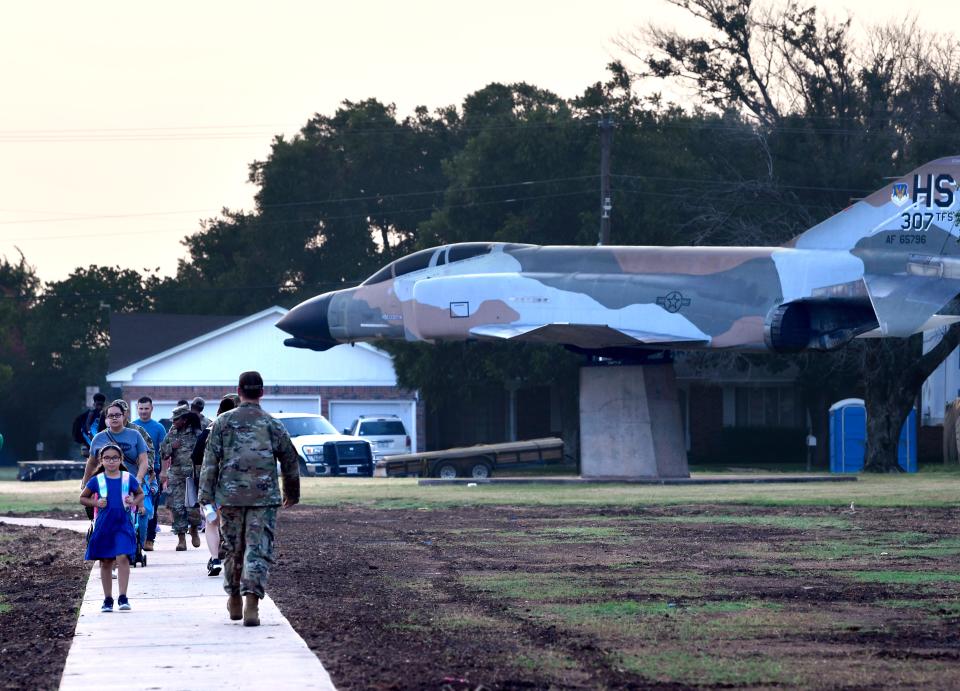
Other efforts were the visitors' center, perimeter fencing, flight line security, fiber optics and a current project for security sensors.
Bridwell, he said, has "shepherded" programs "from start to finish. They wouldn't have happened without him."
And, he added, the support of the Development Corporation of Abilene, which assists with the matching grant piece of projects, and the city of Abilene.
Bridwell said projects are about 70 percent outside money (federal and state and 30 percent local.) The state of Texas places value on having military bases.
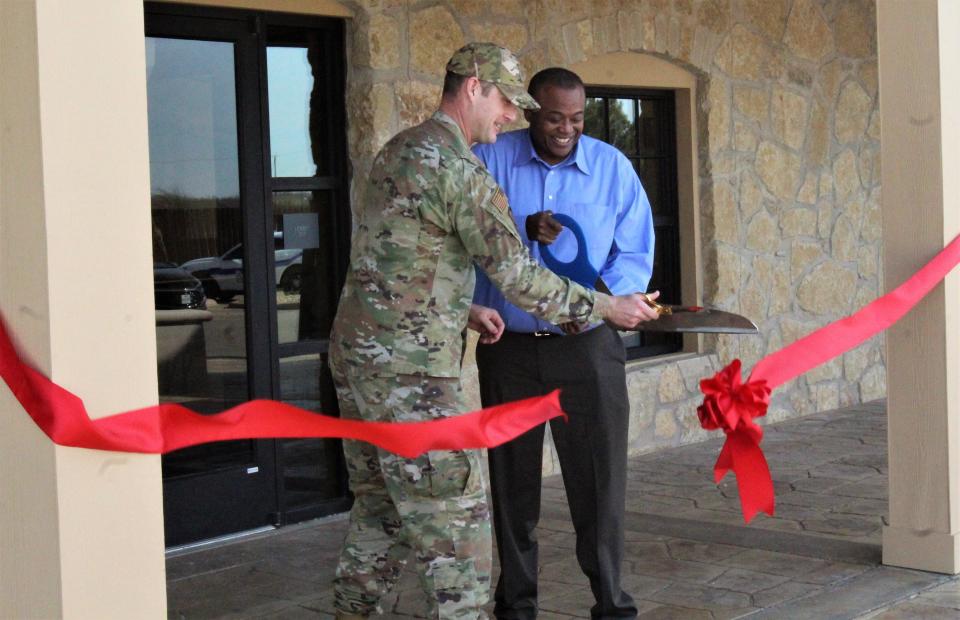
A recent example is the opening of a new Visitor Control Center at the main gate of the base. Base commander Joe Kramer and Abilene Mayor Anthony Williams together snipped the red ribbon that opened the facility in December 2021.
More: New Dyess Visitors Control Center showcases air base-community effort
Known far and wide
There's hardware to prove that Abilene and Dyess have one of the best, if not the best, relationship in the military.
In 2021, Abilene was awarded the Barksdale Trophy as the community that went above and beyond to support airmen and their families in the Global Strike Command.
And there's the Abilene Trophy, given to the community in the Air Mobility Command that is most supportive of its airbase. It was established in 1998 and sponsored by the chamber. The name honors the city for its commitment to its relationship to Dyess. Because Dyess is in the GSC, Abilene is not eligible for that award.
But its name speaks yearly to that commitment.
"Not the MAC," Blair said, "but the community. I think there is a lot of pride of being home to Dyess Air Force Base.
"Jim has one of my favorite quotes. He says Abilene and Dyess Air Force Based have been in a love affair since 1953. I think that's absolutely true. We love being the home of Dyess."
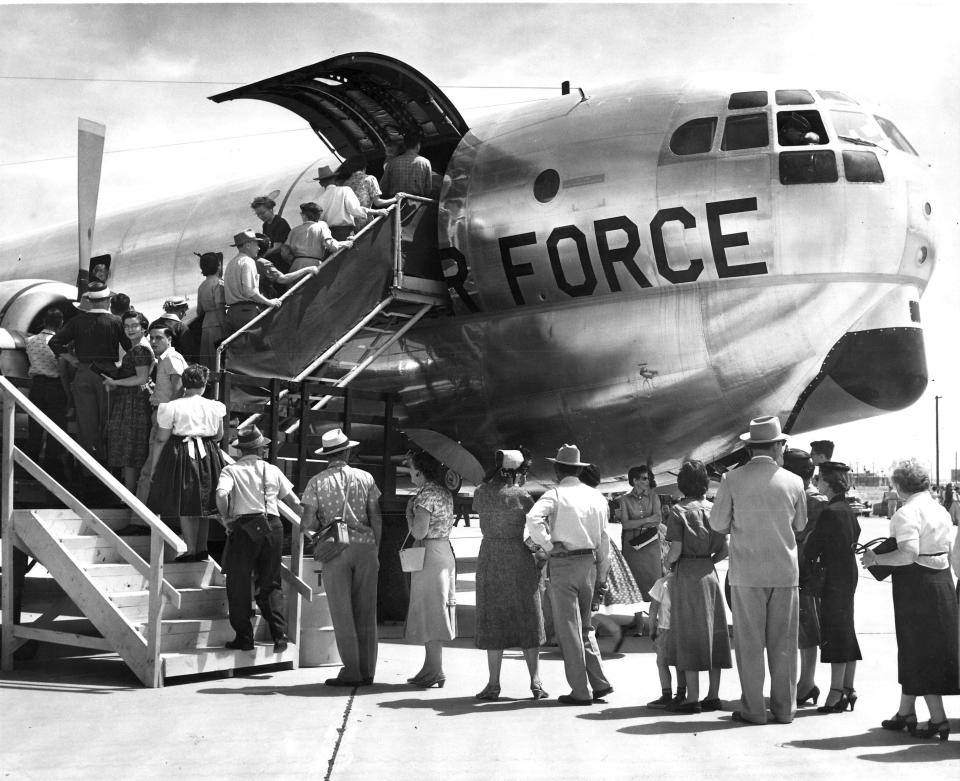
Webster's wisdom wins the day
Webster today lives in the metroplex.
He started as honorary commander for the C-130 group (now a wing) for 10 years, then spent his last four years, 2008-12, as MAC chairman.
He remembers close contact with Dyess leadership and was invited to take part in promotions to colonel.
"The ritual was to go to his house after dark, knock on the door and tell him he got promoted," Webster said. "He didn't know until the group of us arrived to tell him."
Webster's mission was to get the J-model to Abilene.
MAC members would travel to other bases on C-130, sitting in seats. But once, the plane was grounded and they had to fly seated in "those very comfortable canvas seats along the side."
That spoke to the state of the hauler.
Webster became acquainted with leaders and rising leaders at bases across the Air Mobility Command. Once, while waiting for meeting, the AMC vice commander wave to him from down the hall.
A few days later, Webster got a letter from him, saying his mother would've scolded him "because I should have taken the time to come down and say hello."
"That's the kind of friendships that I formed," Webster said. "It was the greatest experience I have experienced in my life."
His wife, Kathy, once cooked a sit-down dinner for the head of AMC and other officials at the Webster home.
"That was unusual," he said. But that's Abilene hospitality.
Because the MAC had clout and because its was a partner with the Air Force, Webster felt free to speak his mind once at the Pentagon.
He asked, "Can you tell my why the busiest C-130 squadrons in the whole world are driving the crappiest airplanes?"
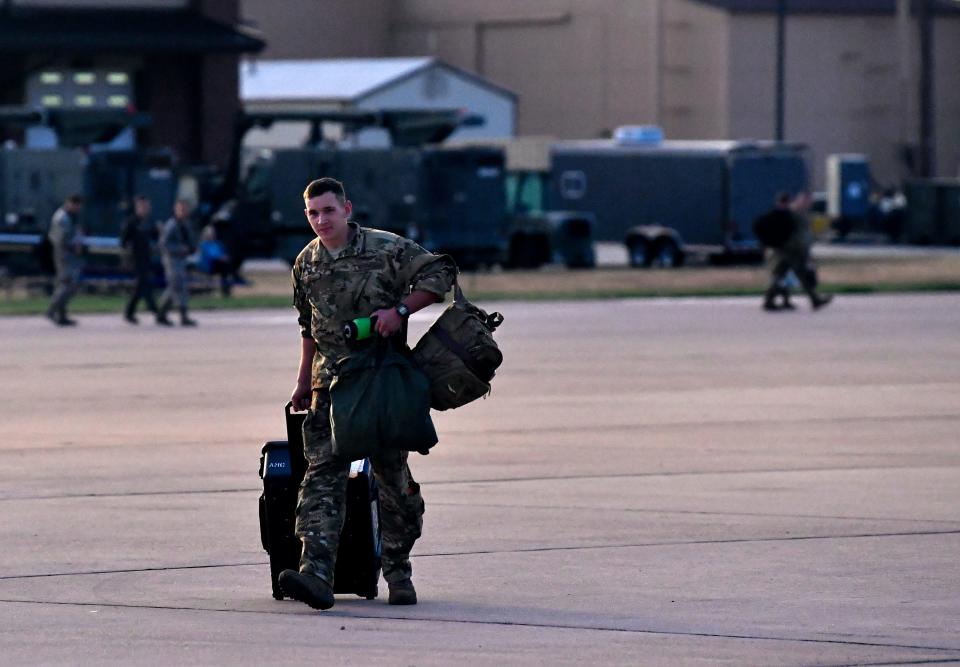
Of course, he said, the conversation paused.
"I think some on our side gasped," Webster said.
The general in the room was quiet.
"But the next thing we knew, we were on the list to get the C-130Js," Webster said.
"What I said was the truth."
And that is what civilians in the MAC can do for the men and women of Dyess AFB.
The B-21 rocks
Last fall, Bridwell and Blair traveled to Palmdale, Calif., to join a select few to see, for the first time, the new B-21.
A bay door opened and rock show-style, with smoke and light effects, the new warplane was viewed.
"What's the coolest thing you've ever done?" Bridwell will ask.
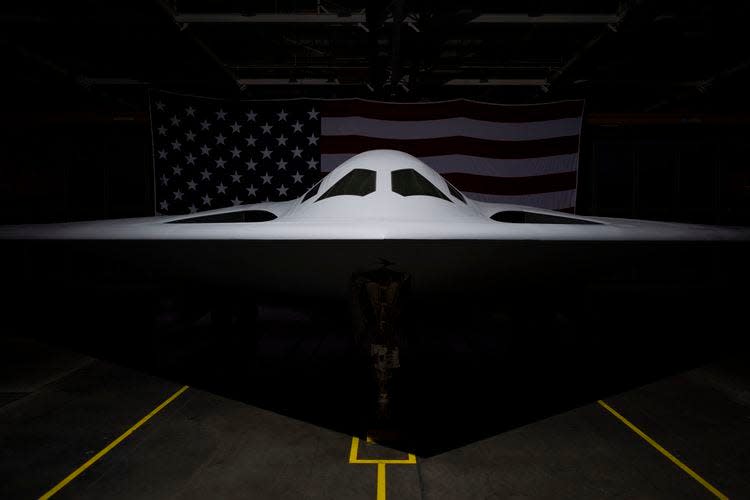
"It was like a rock concert," Blair said. "That type of feeling."
"It was well done," said Bridwell, who was seated behind Secretary of Defense Lloyd Austin.
Yet, the B-1 era is not over. Recently, Popular Mechanics published a piece titled "A Deadly, New B-1 Bomber Could Turn Chinese Aircraft Carriers Into Flaming Wrecks."
The bomber would be loaded with Long-Range Anti-Ship Missiles (LRASM).
"The aircraft could soon carry as many as 36 cruise missiles, granting it a level of firepower approaching that of an aircraft carrier. The sheer number of missiles carried by each bomber would make it a formidable threat—and the most dangerous version of the B-1 yet," the story stated.
These developments and sights get the adrenaline going for someone in the MAC, and fuel further inspiration for its mission.
"We don't shout from the rooftops about our accomplishments," Bridwell said. "We just make sure Dyess has what it needs.
"We work for Dyess Air Force Base. They work for the whole world."
This article originally appeared on Abilene Reporter-News: Dyess MAC, daddy of them all as Military Affairs Committee turns 70

